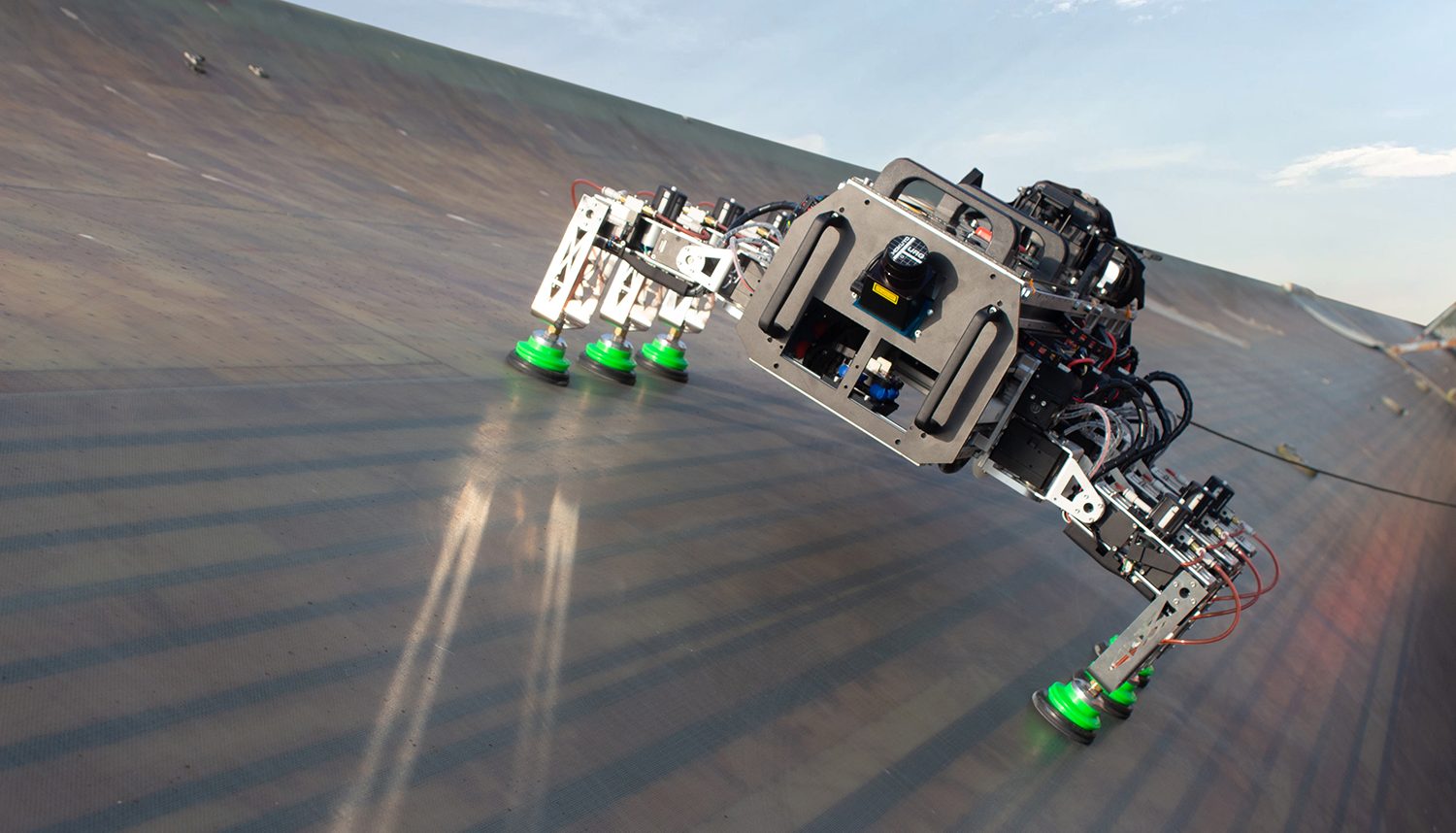In just 35 minutes, the BladeBUG advanced robot can be deployed to inspect areas of concern on a turbine blade – up to half the time it would take a human rope access technician. BladeBUG is safe, fast, reliable and, crucially, can reduce downtime when carrying out essential maintenance tasks or inspecting damaged turbines.
Traditionally, rope access teams have had the job of carrying out inspections and repairs of wind turbine blades. But it takes over an hour for a team of qualified technicians to get kitted up, hoisted to the correct height and inspecting a blade. Specialist teams come at a cost, and have to carefully manage safety risks as they work at great heights and sometimes in harsh weather conditions.
The BladeBUG provides a fast, safe and cost-effective alternative to rope access technicians inspecting blades. For onshore turbines, a ground-up approach for deployment is used. The robot is attached at ground level to a rope lowered by a technician from the top of the turbine, then hoisted into place to inspect the blade. Rigging up the BladeBUG is simple – one end of the rope is attached to a power descender on the ground, then goes up to the top to a pulley and back down to the robot. A top-down approach to deployment works best for offshore turbines.
Because the BladeBUG does not need to be hauled up to the top of the turbine, valuable time is saved when carrying out necessary onshore inspections. All of the processes required to rig and operate the BladeBUG can be managed by operations technicians with basic GWO Working at Height training. The technicians on the tag lines communicate via radios with those operating the power descender to hoist the robot to the correct part of the blade.
Chris Cieslak, Director and Founder at BladeBug, explains: “We designed the BladeBUG to reduce costly turbine shut downs for our wind energy clients. As the UK focuses its energy supply on renewable sources such as wind farms, it is imperative these projects operate as efficiently as possible.
“Once our team has arrived on site, unloaded the BladeBUG and carried out our safety checks, the robot will be attached to a blade and carrying out inspections in a little over half an hour. While vacuumed onto a turbine blade the BladeBUG is able to walk around to any areas of interest.
“Because the robot can be navigated to different locations on huge blades very quickly, this reduces turbine downtime. The BladeBUG also provides cost savings for wind farm operators as it removes the need for employing rope access teams and allows preventative maintenance to be carried out at an earlier stage to increase turbine efficiency.”
The latest round of testing was successfully carried out at the Offshore Renewable Energy (ORE) Catapult’s National Renewable Energy Centre in Blyth.
Andrew Stormonth-Darling of ORE Catapult, explains: “It has been a privilege to be a part of the BladeBUG journey and watch Chris and the team develop such a vital piece of technology for the industry. The BladeBUG continues to go from strength to strength, and this latest test in Blyth is another tick in the box for the future of innovative wind turbine inspections.”
The BladeBUG provides the safest approach to turbine blade inspections and maintenance activities. It saves wind farm operators time and money whilst lowering the level of risk involved for wind turbine technicians. Go to https://www.bladebug.co.uk/ to find out more about how the BladeBUG can improve turbine efficiency.






























